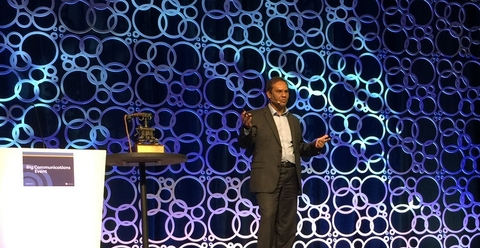Now that CenturyLink has officially completed its acquisition of Level 3, the service provider sees the combined company’s expertise in SDN and NFV furthering the network service automation trend.
Aamir Hussain, CTO of CenturyLink, told FierceTelecom that the two companies will now have a much larger network to address customers.

“The benefits we see is network control automation and virtualization will help expand our ability to help our customers in their digital journey,” Hussain said. “SDN, NFV and SD-WAN will be key drivers for our automation over the long haul and both companies are committed to it.”
RELATED: CenturyLink’s Hussain: Network virtualization is a cultural transformation
Prior to completing the acquisition, CenturyLink and Level 3 had already separately developed SDN-based programs, including new services such as SD-WAN. CenturyLink can now combine the SDN and NFV efforts into a broader initiative to satisfy a larger collection of national and international customers.
In June 2016, CenturyLink launched its SD-WAN service, while Level 3 debuted its service earlier this year.
“CenturyLink had a standalone SD-WAN program, so did Level 3 and now we’re combining both,” Hussain said. “You’ll see us putting out more and more virtual functions.”
Hussain added that because of “our extensive network reach, we can reach a lot more customers than we were able to do as standalone companies.”
Deepening business fiber reach
In tandem with the greater SDN and NFV capabilities, the combined company will have an even larger war chest of local metro and long-haul fiber assets to extend virtualized network services on its own network. By acquiring Level 3, CenturyLink gained an additional 200,000 route miles of fiber, including 64,000 route miles in 350 metropolitan areas and 33,000 subsea route miles connecting multiple continents.
No less important is the on-net building reach. The acquisition increased its reach by nearly 75% to approximately 100,000, including 10,000 buildings in EMEA and Latin America.
“When you look at both companies, together we’ll operate in more than 350 metro areas, 100,000 buildings on-net, and we’ll have 450,000 route miles of fiber,” Hussain said.
But on-net fiber is only part of the equation. Hussain said that CenturyLink will also have a greater amount of fiber that passes nearby buildings, allowing the company to respond to other customer needs that reside in buildings it has not connected its fiber into yet.
“We’ll have hundreds of thousands of buildings that are near-net so the opportunity is very large especially for medium and small enterprises,” Hussain said. “Both companies in the past had a limited footprint to serve these customers, but now combined together we’re in a very good situation.”
Having this greater combined level of fiber assets is important, as approximately 75% of CenturyLink’s core revenue will come from business customers. Nearly two-thirds of its core revenue will come from strategic services.
Accelerating growth
With a leadership plan and transition in place, the fun of integration and making good on achieving synergies begins to set the company on accelerating opportunities and making it an even bigger threat not only in the United States but also globally to AT&T and Verizon.
Another issue will be leadership. Jeff Storey, who has taken the role as COO, will become CEO of the combined company when Glen Post retires in 2019. At that time, Post will then become executive chairman of the company's board of directors.
“Jeff is a very good operator,” Hussain said. “With his leadership and our assets, our people and our network, we’re set for profitable growth.”
An initial barometer for growth patterns will be seen when CenturyLink and Level 3 report company earnings next week.
Having already begun its integration process, the initial focus will be on meeting its synergy goals.
“We have a combined plan to transform ourselves and transform our customers so they can move in the digital economy with our network and our services,” Hussain said. “At the same time, we have a lot of work to do to achieve $975 million in synergies.”
